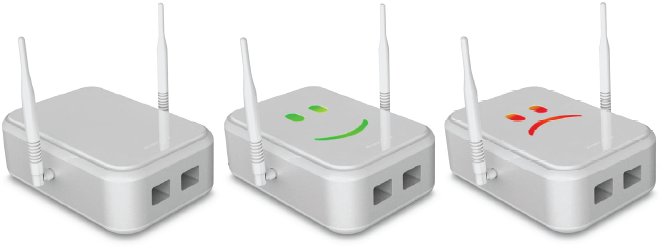Marvell worked in collaboration with Stanford University to design the Marvell SMILE Plug, a development kit designed to turn a traditional classroom into an interactive learning environment. Designed to engage students (via their smartphones / tablets) in critical reasoning and problem solving, the SMILE Plug creates a “micro cloud” within a classroom that is controlled by the teacher.

The Plug based on Stanford’s Mobile Inquiry Based Learning Environment (SMILE) – hence the name – provides the ability to establish a local Wi-Fi network for up to 60 students. To simplify deployment and management of the SMILE Plug, Marvell has developed a plug administration API and user interface called Plugmin.
Key Features of the SMILE Plug:
- Wi-Fi support for 60 clients
- Easy deployment and management
- 5V Lithium Ion Backup battery
- Open Platform: Arch Linux for ARM and NODE.js
- SMILE Junction Server: Plug server/client environment & SDK and access to SMILE applications
- High-performance with low power with Armada 300 SoC
- Debug support with JTAG and extra Ethernet port
The SMILE Plug is powered by the ARMADA 300 CPU SoC (Up to 2 GHz) with 512MB of DDR3 memory and 512 MB of Flash Memory and includes 2x Gigabit Ethernet, 2x USB, Wi-Fi (Avastar 88W8764 Wi-Fi SoC) and an SD card slot up to 32GB. The Plug Computer is an embedded computer that plugs into the wall socket. Network connectivity is done via Gigabit Ethernet and peripheral devices can be connected using USB 2.0 and Wi-Fi.
The SMILE Plug will be based on Arch Linux for ARM and NODE.js, as well as a plug administration API and Stanford’s SMILE environment and software development kit (SDK). All components are open-source making the SMILE Plug an platform on which to develop or port any additional learning applications. The Plugmin administration client runs on Android-based devices and enables easy administration of the SMILE Plug. Used in conjunction with the SMILE Junction Server Administration Client, the teacher can easily control or run interactive classroom learning experiences.
You can watch to video below to see how SMILE works in a classroom.
The SMILE Plug will be available in spring 2012. More information is available on Marvell Plug Computer page and Stanford’s SMILE page. Developers may also be interested in checking out http://www.plugcomputer.org/, a community working on software for Marvell ARM based plug computers.

Jean-Luc started CNX Software in 2010 as a part-time endeavor, before quitting his job as a software engineering manager, and starting to write daily news, and reviews full time later in 2011.
Support CNX Software! Donate via cryptocurrencies, become a Patron on Patreon, or purchase goods on Amazon or Aliexpress




